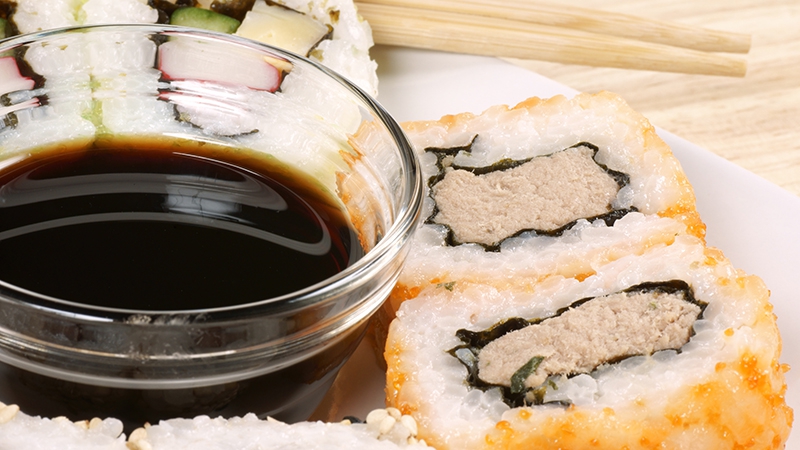Why Is Soy Sauce So Good with Sushi?
Sushi, the iconic Japanese dish, is incomplete without its quintessential companion—soy sauce. This umami-rich condiment elevates the flavors of sushi in a way that few other pairings can achieve. But what makes this combination so irresistible? Let’s delve into the science, history, and culinary artistry behind this perfect match.

The Science of Umami: A Flavor Synergy
1. Umami: The Fifth Taste
Soy sauce is packed with glutamates, compounds responsible for the savory "umami" taste. These glutamates interact synergistically with the inosinates in fish (especially tuna and salmon) and guanylates in seaweed (nori), creating a flavor explosion that is greater than the sum of its parts.
Studies show that umami compounds enhance each other when combined, making soy sauce and sushi a scientifically proven match.
2. Fermentation Magic
Soy sauce is fermented from soybeans, wheat, salt, and koji mold. This fermentation process breaks down proteins into amino acids (like glutamic acid) and sugars, resulting in a complex, savory-sweet profile that complements the delicate flavors of raw fish.
3. Salt and Fat: A Classic Pairing
The saltiness of soy sauce cuts through the richness of fatty fish (e.g., toro or salmon), balancing the palate. This is the same principle behind pairing salt with butter or caramel.
Cultural and Historical Context
1. Origins of the Pairing
Soy sauce (shoyu) has been a staple in East Asian cuisine for over 2,000 years. When sushi evolved in Edo-period Japan (1603-1868), soy sauce was already a ubiquitous condiment. Its use with sushi became natural due to its preservative qualities and flavor-enhancing properties.
2. The Role of Fermentation in Japanese Cuisine
Japanese cuisine heavily relies on fermented foods (miso, natto, sake), and soy sauce fits seamlessly into this tradition. Its depth of flavor aligns with the Japanese culinary principle of "umami harmony."
3. Etiquette Matters
In traditional sushi dining, soy sauce is used sparingly to accentuate, not overpower, the fish. Chefs often brush sushi with a soy-based glaze (nikiri) to ensure the perfect balance.
Culinary Mechanics: Why It Works
1. Flavor Layering
Sushi is a delicate interplay of:
Rice: Mildly acidic (from vinegar) and slightly sweet.
Fish: Ranging from lean (hirame) to fatty (otoro).
Nori: Earthy and briny.
Soy sauce bridges these elements with its salty-sweet-umami profile.
2. Texture Contrast
The liquid consistency of soy sauce contrasts with the firmness of fish and the stickiness of rice, creating a satisfying mouthfeel.
3. Aroma Enhancement
The volatile compounds in soy sauce (like 4-hydroxy-2,5-dimethyl-3(2H)-furanone) add a caramel-like aroma that enhances the freshness of the fish.
Modern Variations and Innovations
1. Tamari vs. Shoyu
Tamari (wheat-free soy sauce) is richer and less salty, preferred for sashimi. Shoyu (traditional soy sauce) is lighter and more versatile.
2. Infused Soy Sauces
Contemporary chefs experiment with citrus-infused (yuzu shoyu) or spicy (rayu) soy sauces to add complexity.
3. Low-Sodium Alternatives
Health-conscious diners opt for reduced-sodium soy sauce, though purists argue it lacks depth.
Conclusion: A Timeless Pairing
Soy sauce and sushi are a testament to the harmony of science and tradition. From umami synergy to cultural heritage, this duo exemplifies how simple ingredients can create extraordinary experiences. Next time you dip your sushi, remember—you’re tasting centuries of culinary evolution in one bite.

